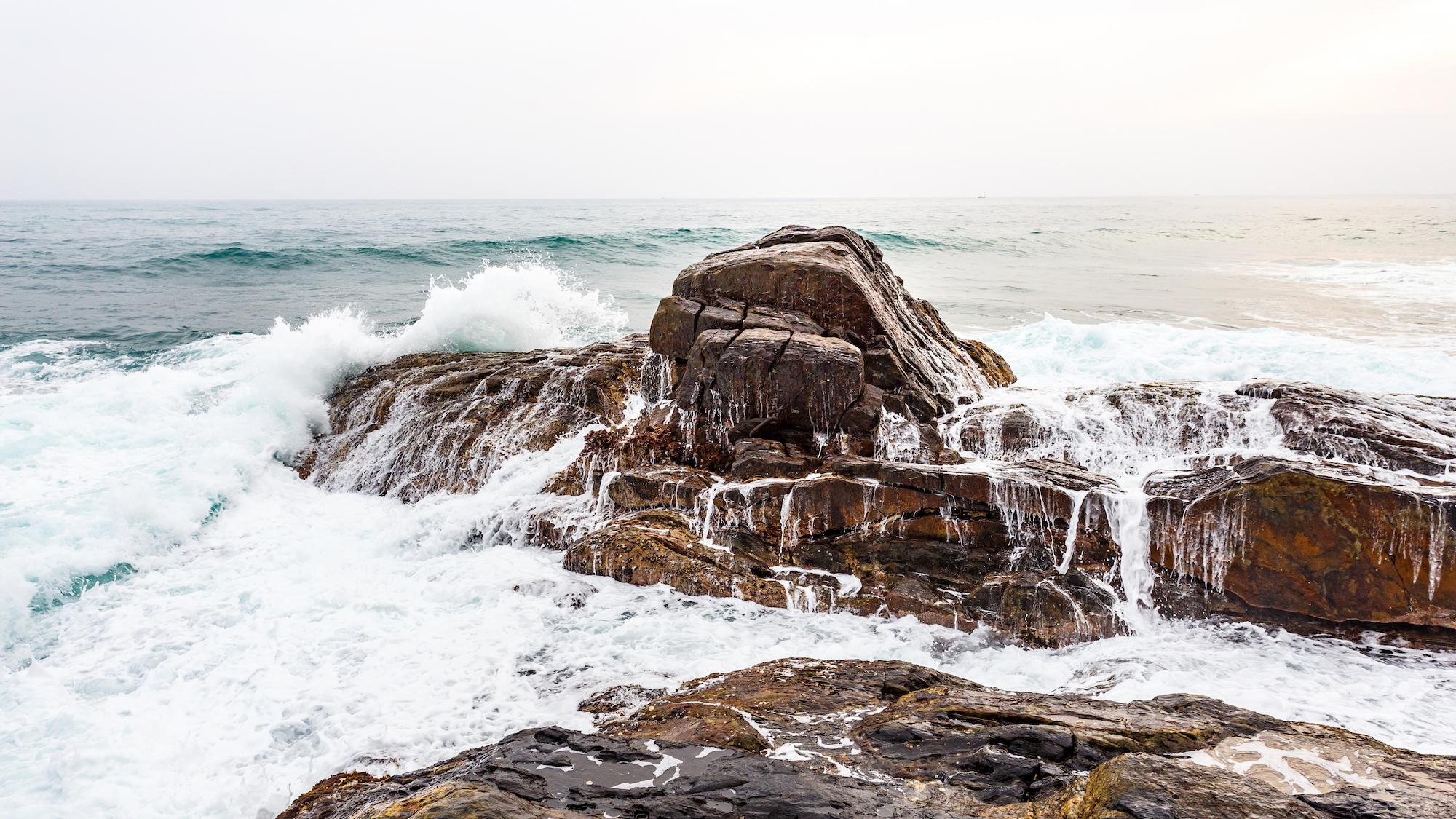

Climate change is giving us stronger, more destructive ocean waves, which in turn exacerbate already serious coastal erosion issues. With this in mind, researchers are designing a new underwater engineering project that could help literally swing the pendulum back in humanity’s favor. As first highlighted by New Scientist on Sunday, a team at the Italian National Research Council’s Institute of Marine Science are working on MetaReef—a system of upside-down, submersible pendulum prototypes capable of absorbing underwater energy to mitigate wave momentum.
Although still in its laboratory design phases, MetaReef is already showing promising results. To test early versions of their idea, the team tethered together 11, half-meter-long plastic cylinders to the bottom of a narrow, 50-meter long tank. Each cylinder is made from commercial PVC pipes, filled with air to make them less dense than water, and subsequently waterproofed with polyurethane foam. A steel cable then anchors each cylinder with just enough tension to keep them in place underwater, while also able to swing back and forth depending on currents’ strength and direction.
[Related: Maritime students gear up to fight high-seas cyberattacks.]
It’s not as simple as just anchoring a series of tubes under the waves, however. Researchers needed to hone both the cylinders’ size and distance between one another to ensure optimal results that wouldn’t accidentally create a watery echo chamber to exacerbate current strengths. Once the parameters were fine tuned, a piston at one end of the tank generated waves that interacted with the cylinders. By absorbing the tidal energy, the team’s MetaReef managed to reduce wave amplitudes by as much as 80 percent.
Of course, ocean current interactions are much more complicated than pistons splashing water in a relatively small tank. Speaking with New Scientist, Mike Meylan, a professor of information and physical sciences, warned that especially strong storms—themselves increasingly frequent—could easily damage pendulum systems deployed in the real world. That said, researchers are confident that MetaReef’s customizability alongside further experimentation could yield a solid new tool in protecting both threatened coastlines, and valuable structures such as offshore platforms. This malleability is contrasted with artificial coastal reefs, which while effective, are much more static and limited in placement than MetaReef, or similar designs.
The team is presenting their findings this week at the annual International Workshop on Water Waves and Floating Bodies held in Giardini Naxos, Italy. Although societal shifts in energy consumption remain the top priority to stemming the worst climate catastrophes, tools like MetaReef could still offer helpful, customizable aids that deal with damage already done to our oceanic ecosystems.
